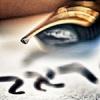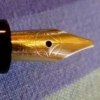Search the Community
Showing results for tags 'weight'.
-
Greetings, fountain friends, I’ve been an offline observer to this wonderful community for some time now, and it has influenced me in many of my pen decisions and handwriting expansions. I'm an Irish doctor working in England, and in my spare time, I am a keen German language user, chess player, p...
-
Hello FPNers, I'm all about vintage flex and want to use a rough adaptation of Copperplate for journaling and letters. A while back I purchased a lovely little gold-filled ring top Wahl FP with a wet noodle #2 nib. The nib writes about a Western EF when not flexed, so I'd like to get a finer nib....
- 48 replies
-
I've read the few reviews written about the new Wahl-Eversharp Decoband with the superflex nib, but I haven't seen a review by a woman (or someone with small hands). I know this is an oversize pen, and it weighs 45 grams uncapped. I'm interested in hearing from someone who owns the pen and has small...
- 24 replies
-
- wahl-eversharp
- decoband
-
(and 2 more)
Tagged with:
-
Some might say that anyone with more than ten fountain pens is a collector. If this is true then I might be that. I buy to use rather than to file away in a case or drawer, but in truth I only have ten or so inked at any one time. I've tried to do a purge and find that all I can manage is to offload...
- 65 replies
-
- fountain pens
- nibs
-
(and 5 more)
Tagged with:
-
I recently got a Pilot Metropolitan for the first time - and I can see what so many people mean when they've said it is a bargain for the price. It's beautiful, a nice thickness, substantial feel... But for my small hands, a little too substantial - it feels too heavy for me, especially when posted,...
-

Instruments For Measuring Fountain Pens
Susan3141 posted a topic in Fountain & Dip Pens - First Stop
What are the best instruments to use to get accurate measurements of fountain pens? I want to measure weight (and I assume a postal or kitchen scale would be adequate for that). Is a caliper the best instrument for measuring diameter? I want to measure barrel and grip diameter. Thanks, Susan- 7 replies
-
- measure
- instrument
-
(and 3 more)
Tagged with:
-
Does anyone know of a simple and reliable way to increase the forward weight of a Hero 616 Jumbo? Specifically I find the pen a little back heavy when it is posted - it's a light pen already. The balance doesn't feel quite right unposted either. Many thanks.
-
Hi there! I just have a quick question: what's the approximate weight of the Sheaffer's 300 in grammes? Qualitatively, I know that's the heavisest pen I own, but I'd like to benchmark it before I set out to get/select new pens. Many thanks! Tinevisce
-
I was considering purchasing a Namiki (resin) or Pilot (metal) Falcon fountain pen. There are no specialty pen shops in the area, so I will not be able to try one out before buying. My question is if either one is top heavy (posted and unposted). I would assume the resin one is balanced, but I am no...
-
Hello everyone! This is probably going to be somewhat silly, but here goes: I was picking out my fork for dinner the other night and it crossed my mind that perhaps my preference for a small-medium lightweight fork might have a parallel in the other things I use. I've only played billiards several...




